The Rocky Horror Picture Show (R) ★★
 Nearly a half-century after the theatrical debut of Jim Sharman's The Rocky Horror Picture Show, the movie at the heart of the cult experience has been reduced to near-irrelevance. Devotees attend midnight screenings not because they want to see the movie but because of all the elements that accompany it, including a live performance by a "shadow cast," cosplay, audience participation, and a degree of fellowship that binds together like-minded people for two hours. Most showings of The Rocky Horror Picture Show are heavily attended by members of the LGBTQ community but they are open to straight viewers looking to take a walk on the wild side. What happens at a Rocky Horror Picture Show midnight participatory showing stays at the Rocky Horror Picture Show midnight participatory showing.
Nearly a half-century after the theatrical debut of Jim Sharman's The Rocky Horror Picture Show, the movie at the heart of the cult experience has been reduced to near-irrelevance. Devotees attend midnight screenings not because they want to see the movie but because of all the elements that accompany it, including a live performance by a "shadow cast," cosplay, audience participation, and a degree of fellowship that binds together like-minded people for two hours. Most showings of The Rocky Horror Picture Show are heavily attended by members of the LGBTQ community but they are open to straight viewers looking to take a walk on the wild side. What happens at a Rocky Horror Picture Show midnight participatory showing stays at the Rocky Horror Picture Show midnight participatory showing.
Stripping away the live elements, one finds a movie at the heart of this all. It's a pretty bad movie, as even some of the most die-hard adherents will admit. The thing that makes The Rocky Horror Picture Show both adored and beloved relates to the communal experience, not the ineptly-made, amateurish musical that unspools on screens. This, therefore, isn't an attempt at reviewing one of those screenings. Instead, it's a look at the final product turned in by Sharman to 20th Century Fox in 1975 - a movie that was savaged by mainstream critics at the time and bombed so badly during its traditional distribution that it seemed doomed to lose money (even though it cost next-to-nothing to make) until its cult status bona fides were established and it found a second life at the Witching Hour.
What we have here is a godawful movie that, despite its general badness, nevertheless casts a spell of sorts. For me, the mesmerism doesn't last long enough to catapult the movie into the "guilty pleasure" category, but some of the songs are catchy (especially early in the proceedings) and the bacchanalian excesses are entertaining until they become repetitive. I'd say the first third of The Rocky Horror Picture Show is enjoyable. The same, unfortunately, isn't true of the final two-thirds. There are fewer songs and more dialogue. The plot is painful to contemplate so the more The Rocky Horror Picture Show focuses on it, the more difficult it is to endure. Fast-forwarding helps a lot with this movie. Just skip to the next song. And the one after that. Anything you might miss in between is inconsequential and you won't be better able to follow the narrative by watching all the stilted and/or campy performances. These things work in a communal setting, where there are callbacks and other participatory activities (beware - you might get wet during a rainy sequence), but it's a different experience altogether if you're simply watching the movie.
Sharman's film is based on an obscure stage show he mounted a few years earlier. The genesis of The Rocky Horror Show (as it was called in its original form) was a parody/homage to the pre-1960 horror genre, with a heavy emphasis on the Hammer films and James Whale's Frankenstein. The movie's opening number, "Science Fiction/Double Feature," references a number of such titles, including (but not limited to) The Day the Earth Stood Still, Flash Gordon, The Invisible Man, King Kong, It Came from Outer Space, Forbidden Planet, Invasion of the Triffids, and When Worlds Collide.
The movie introduces us to a vanilla couple, Janet Weiss (Susan Sarandon) and Brad Majors (Barry Bostwick), who become stranded in the middle of nowhere when their car breaks down. They think they're in luck when they stumble upon a mansion but they're unprepared for what they find inside: a Transylvania Transvestite Convention, presided over by Dr. Frank-N-Furter (Tim Curry) a.k.a. "The Sweet Transvestite," who is just about to give life to his latest creation, Rocky Horror (Peter Hinwood), in a scene designed to evoke memories of the one in the 1931 Frankenstein. Also involved in the shenanigans going on inside the house are Frank's servants, Riff Raff (Richard O'Brien), Magenta (Patricia Quinn), and Columbia (Nell Campbell), as well as the irrepressible Dr. Everett V. Scott (Jonathan Adams) and the doomed Eddie (Meatloaf). Viewing all of this from afar and providing commentary is The Criminologist (played by veteran British actor Charles Gray, who played Blofeld in Diamonds are Forever).
There are over a dozen song-and-dance numbers in The Rocky Horror Picture Show. All are campy and feature choreography that might embarrass Busby Berkeley with its clumsiness. But the best of them, including "Time Warp," "Sweet Transvestite," and "Touch-A, Touch-A, Touch Me," are invested with such glitzy energy that it's impossible not to take notice. If you're watching the film without the attendant sideshow (something that isn't recommended), the songs will keep you from giving up.
The Rocky Horror Picture has a couple of analogs. Both are musicals and both came out after this one, so it's possible to argue in favor of some degree of influence. Xanadu, released in 1980, captured a similar campy cheesiness admirably but the songs were catchier (and, thanks to their Top 40 prowess, omnipresent) and the cast featured Olivia Newton-John and Gene Kelley. In my review of Xanadu, I said the following: "Conventional wisdom decrees that Xanadu is a horrible film. In a sense, conventional wisdom may be correct, but it ignores one key ingredient: viewed in the right frame of mind, this movie can be a lot of fun." To an extent, something similar can be argued about The Rocky Horror Picture.
Then there's Little Shop of Horrors, which attempted something similar to The Rocky Horror Picture (a musical parody of B-film sci-fi/horror) but hit a home run with the material. Still, it's fair to wonder whether Howard Ashman might have in some way been inspired by The Rocky Horror Picture, which opened about five years before he began kicking around the idea of making a musical out of its 1960 antecedent. The most profound difference between Little Shop and Rocky Horror is that the former doesn't lose its audience when the singing stops while the latter does.
Had The Rocky Horror Picture Show not become such a phenomenon, it would be reasonable to assume that Susan Sarandon and Tim Curry might feel uncomfortable if asked about it. (This represented Curry's motion picture debut - he came along with director Jim Sharman and half the cast from the stage.) Although there have been times over the years when one (or both) have seemed less-than-enthusiastic about discussing their participation, both have grown to the point where they have embraced it. Curry, of course, steals the show. Sarandon, whom history would highlight as the bigger star, is forgettable, but it's hard for anyone to hold the camera's attention with the Sweet Transvestite around.
The bottom line is that if you're going to watch The Rocky Horror Picture Show, don't do it alone. Don't pop the di
To get the full Quicklook Films experience, uncheck "Enable on this Site" from Adblock Plus
box office top 10
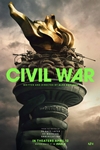
Civil War Released: April 12, 2024 Cast: Kirsten Dunst, Wagner Moura 11.1M
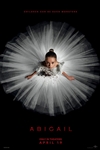
Abigail Released: April 19, 2024 Cast: Melissa Barrera, Dan Stevens 10.2M

Godzilla x Kong: The New Empire Released: March 29, 2024 Cast: Rebecca Hall, Brian Tyree Henry 9.5M
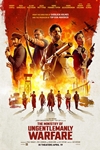
The Ministry of Ungentlemanly Warfare Released: April 19, 2024 Cast: Henry Cavill, Eiza Gonzalez 9M
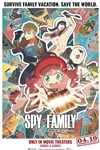
Spy x Family Code: White Released: April 19, 2024 Cast: Takuya Eguchi, Saori Hayami 4.9M
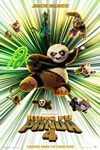
Kung Fu Panda 4 Released: March 8, 2024 Cast: Jack Black, Viola Davis 4.6M
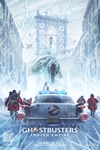
Ghostbusters: Frozen Empire Released: March 22, 2024 Cast: Paul Rudd, Carrie Coon 4.4M
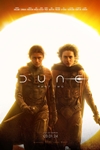
Dune: Part Two Released: March 1, 2024 Cast: Timothée Chalamet, Rebecca Ferguson 2.9M
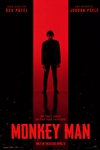
Monkey Man Released: April 5, 2024 Cast: Dev Patel, Sikandar Kher 2.2M
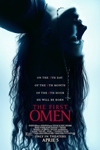
The First Omen Released: April 5, 2024 Cast: Nell Tiger Free, Bill Nighy 1.7M






